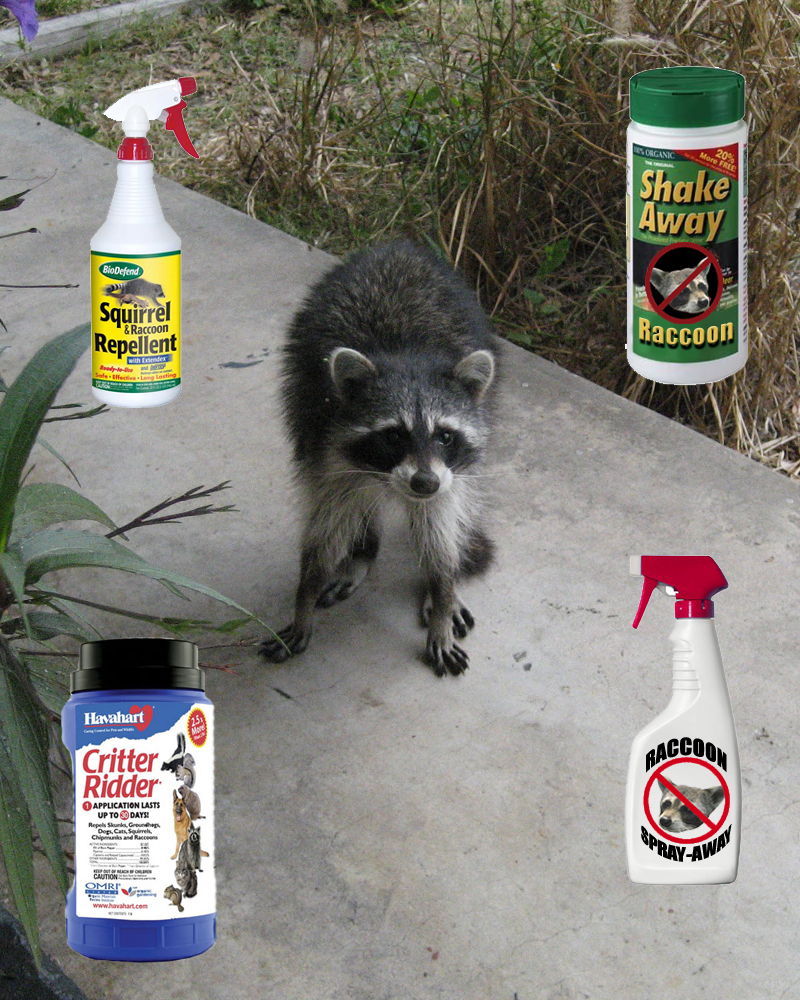- USA Wildlife Removal Education Guide and Resources
Animal Repellent - What deterrent works?

An Overview Of Wild Animal Repellents
One of the biggest growth areas within the pest control industry is the range of wild animal repellents that are on the market, and there is no doubt that the prospect of a product that can be sprayed around an area to drive away wild animals is an attractive one. There are however still questions about how effective these repellents can be, and in what situations they can be at their most effective. There are also a variety of different repellents, along with plenty of different home remedies that are said to drive wild animals away, but the important thing is to be aware of what you are using when you spray or spread an animal repellent around your property.
How Do Animal Repellents Work?
The key feature of an animal repellent is that it makes life in a certain location, such as an attic or under a shed, so unbearable for the target animal that it feels that despite the attractive features of a particular area, it must leave to find a more comfortable place to live. Some repellents are simply strong and unpleasant smells such as those given off by ammonia or mothballs, while other repellents work by copying the scent of a predator.
The issue that people can have is that in some cases the features of living in a particular area can be more attractive to the animal than the inconvenience and discomfort caused by the wild animal repellent. There are also repellents that give off a an audible sound which is said to be too high pitched for the human ear, but claims to be unbearable for wild animals, but these devices have had similar inconclusive results when dealing with wild animals.
The Different Types Of Animal Repellent Available
There are several different types of animal repellent available commercially, and the majority of these are chemical based repellents that use a man made substance to give off a scent that is likely to repel the target animal, usually achieved by trying to replicate the scent of a predator. There are also many companies that actually provide the scent of predators to use as a repellent, although this is another product which has had mixed results in dealing with nuisance animals. The mechanical devices such as the noise emitter are also on the market, but the reality is that you may have to use trial and error to find a type of repellent that will work in your particular situation.
When Can Repellents Be Effective?
Because animal repellents work by making a particular location unpleasant for the nuisance animal, repellents will be at their most effective when there are limited features drawing the animals to a particular location. Another situation in which repellents can be effective is if you are trying to drive animals away from a particular enclosed space, as in open areas the scent will spread, but in a confined space such as a wall cavity, the scent of the repellent will be much stronger. Using a repellent alongside other measures such as removing food sources and exclusion tactics can be much more successful than simply spraying some repellent around the area where the animals are a problem.
The Problems With Using Animal Repellents
One of the biggest problems with using repellents is that you are often committing to a repeat purchase if you have animal problems in the yard or garden, and even if the product does work successfully, you will often find the animals coming back if you stop using the repellent. The effectiveness of the majority of animal repellents will also be mixed at best, and although the reviews found online suggest some repellents can work, most will also have other reviews suggesting they are ineffective. Another problem with repellents is because there are no fair and independent tests for the success of the products, it is difficult to prove or disprove how useful they are without using them yourself.
Alternative Methods Of Dealing With Nuisance Animals
The reality that most animal control experts will tell you is that repellents are not an effective way of dealing with problem animals in the long run. If you have animals within your property, then looking at exclusion options such as funnels and cones will be a much more effective way of getting rid of the pests, and once they have left the property the remaining entry points can all be sealed.
When it comes to dealing with nuisance animals getting in to a yard or garden, the money spent on repellents will often be much better spent on making sure you have a solid fence that will stop many animals from getting in. Removing attractive features to animals such as low shrubs that provide cover, and removing food sources can also be a smart move to help resolve the problem.
Bat Repellent
Bird Repellent
Groundhog Repellent
Opossum Repellent
Raccoon Repellent
Rat Repellent
Skunk Repellent
Snake Repellent
Squirrel Repellent
Go back to the main How to Get Rid of Wild Animals page for more information about animal repellent such as bleach, ammonia, mothballs. Can you buy something at Home Depot to repel animal?

